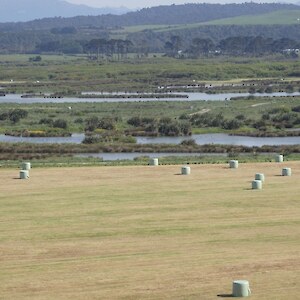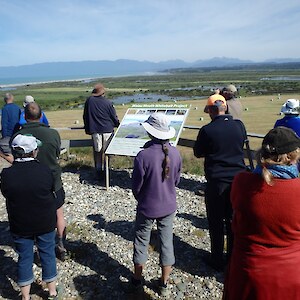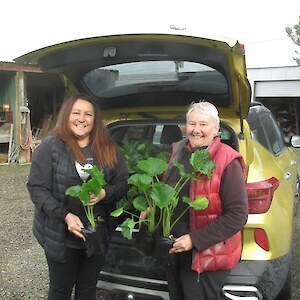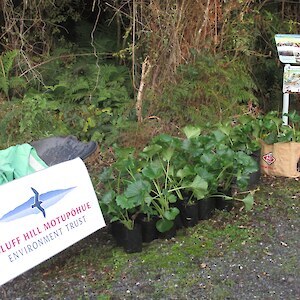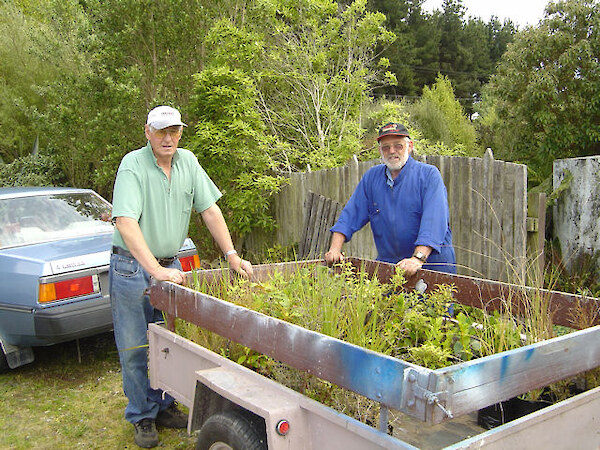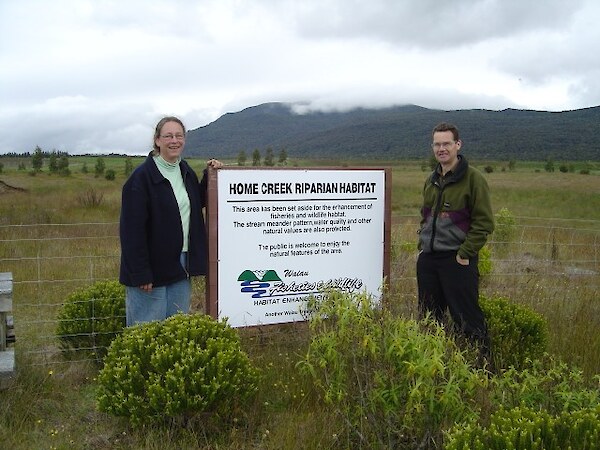40th Aniversary of Te Rere yellow-eyed penguin Reserve
The recent 40th Anniversary celebrations at Te Rere were a time for looking back over the achievements of the last 40 years, but also the challenges for the future and some solid hands-on planting of 500 locally sourced native plants. The working day in August had been postponed due to Covid and a smaller group assembled in Invercargill for the 90 minute journey to the reserve on Saturday 4th December 2021.
After the planting of 500 locally sourced native plants supplied by Pukerau Nursery, Te Rere stalwarts Fergus Sutherland and Brian Rance took groups to both sides of the reserve where penguins nest. It is now hard to see the scale of the plantings – where once you could see across the whole reserve, native plants obscure distant views. However, people were able to see and hear Hoiho on their nests (with chicks) and look over the landing areas where the penguins come ashore, walk through 20 year old plantings and see the progress that has been made over that time.
The celebration couldn’t be complete without a cake and a special “penguin cake” had been made for the occasion by Linda Jackson and Fergus had donated one of his special Hoiho paintings which was “won” in a special draw by Estelle Pera-Leask from Bluff Motupohue. Even the predicted rain and thunderstorms held off on this special day in the history of Forest and Bird’s Te Rere Reserve. For more information visit https://www.facebook.com/te.rere.reserve/
Posted on: Thursday, 9 December 2021









